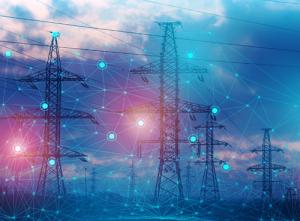A More Flexible Grid
Anthony Allard is Executive Vice President, Managing Director, United States and Head of Hitachi ABB Power Grids' business in North America. Allard was most recently COO of BECIS, a leading energy as a service solution provider in Singapore. Allard spent most of his career in the power sector at GE and Alstom in the U.S. and held several executive-level positions for GE Prolec Transformers. He was General Manager for the GE-XD High Voltage Products partnership and spent ten years working for Alstom Grid in North America and the Americas in Strategy and Operations management.
There is increasingly widespread recognition that efforts to combat climate change depend on dramatic reductions in greenhouse gas emissions. Accordingly, many state governments in the U.S., power utilities, and even many large companies, such as Amazon and Google, have established aggressive greenhouse gas reduction targets.

Typical state-level greenhouse gas emission goals involve reducing carbon by eighty percent or more by 2050 or pledges to shift to a hundred percent renewable and/or carbon-free energy in the same timeframe. Companies have made broadly similar commitments.
Meeting these goals will require fairly dramatic adjustments in energy usage, typically involving a wholesale shift toward electricity as the primary power source for most sectors of the economy, such as transportation, manufacturing, and heating, which have traditionally relied heavily on fossil fuels. Equally important, this electricity needs to be green, produced primarily by renewable sources such as wind, solar, and hydropower, rather than coal- and gas-fired power plants.
This strategic realignment around low-carbon energy production will demand significant changes to the transmission and distribution networks we have relied on for decades to get power from where it is produced to where it is needed in a cost-effective way.
Current Transmission Limits/Modernization Needs

